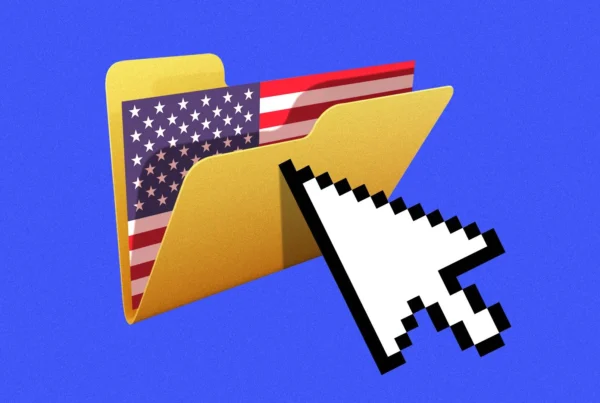Kyle Orton is a Middle East expert and a research fellow at the Henry Jackson Society, a British think-tank. He has been published in the Wall Street Journal, the New York Times, the Telegraph, the Independent and various other outlets. Kyle tweets at @KyleWOrton, and you can read his blog at https://kyleorton1991.wordpress.com.
Mark Narusov: Aside from being a way to reassert Russia’s superpower status and undermine the American-led world order, Russian involvement in the Syrian Civil War is also being advertised by the state-run TV as a counter-terrorism cause. You have argued, however, that the Russian regime’s principal tactical goal is to leave a binary confrontation in Syria — between ISIS and Assad — by wiping out the moderate opposition to force the West to align with the government. What has led you to this conclusion?
Kyle Orton: Russia’s actions are the clearest indicator of its strategic priorities in Syria. When it intervened in late 2015, its airstrikes targeted not just non-IS insurgent targets but specifically the CIA-supported elements of the moderate opposition. Russia attacked the mainstream opposition in the west of Syria with more than eighty percent its airstrikes between September 2015 and March 2016. The retaking of Palmyra in March 2016 as the capstone of Russia’s formal intervention was a political statement designed to rewrite what Russia had in fact done, which is why the Russians and Assad cut a deal with IS to allow the jihadists to pull out the bulk of their forces in Palmyra—the pro-regime coalition needed the timing of this “victory” for messaging-political purposes. Since then, the Russians helped the devastation of Aleppo city, long a bastion of the mainstream rebellion, and continued that investment even when the diversion of resources led to re-losing Palmyra. It is quite clear that Russia prioritizes the destruction of engageable elements of the nationalist opposition over the defeat of jihadi-salafists in Syria because that is the surest way to rehabilitate its client regime.
MN: Could you offer insight into the subjection aspect of the relationship between the Kremlin and the Assad regime? Does Assad’s dependency on Russia’s air force convert into Russia’s influence over Assad’s decisions and make the latter an obedient proxy? Or does the situation rather resemble the sponsor-like status of Moscow with respect to the North Vietnamese during the Vietnam war, whereby the USSR provided most of assistance but got very little influence in return?
KO: The relationship between Assad and Moscow is one of co-dependency; Assad’s regime would not still be standing had it not been for the Russian aerial intervention in 2015. But the balance of influence is with the ground forces that were built over the prior few years after Iran’s intervention to rescue Assad with its international Shi’a jihad in 2013. The Iranian-constructed and -commanded forces, plus the battered remnants of Assad’s army and local militias, have the initiative, which means that when Russia makes an agreement with the West to not enter a certain area, for example, the Iranian/Assad forces can and do violate it at will. The Russians are then put before a choice of: a) trying to forcibly restrain these ground forces; b) doing nothing; or c) providing air support. The Russians have near-invariably chosen (c) because their interest in their client’s victory outweighs any political benefit of being seen as an honest broker by the West, the West’s regional allies, or the Syrian opposition. This has led to some suspicion that Russia is playing “good cop”—presenting a reasonable face to the West as cover for the regime coalition’s aggressive behaviour. By now, it has to be said, there does seem to be some truth in this: the pro-regime coalition senses it can have it all, and the only needs are time and to freeze certain fronts while they concentrate offensives on others. But I believe there were times Russia made good-faith agreements and it simply did not—and does not—have the leverage to restrain the Iranian-led ground forces.
MN: Does Putin’s Russia generally behave as a rule-abiding power in Syria, true to its commitments in terms of ceasefires and various agreements with Western powers, say, or does it act in a more rogue-like manner that would ultimately force the West to rely more on hard power and the threat thereof to reach meaningful collaboration?
KO: It is difficult to assess the degree to which the Russians have been rule-abiding in Syria in terms of agreements struck with other external powers because they are hostage to the actions of the Iranian and Assad regime ground forces, which mean that even agreements made in good faith have proven unenforceable. An additional complication is that even when ceasefires are abided by, they are abided by under the strict terms set in order to free up regime manpower for aggression in other areas—and then the ceasefire is broken. In other words, ceasefires have been a way that the Assad regime and its allies sequence their war, and the West’s collaboration in such compacts has effectively helped the pro-Assad forces win the war. If we talk of rule-abiding in terms of war-making conduct, the Russians have trampled every known international and moral law. Though there is often much hysteria about the “risks of World War Three” if Russia is confronted in Syria, the Trump administration demonstrated quite plainly for everybody in April that this Kremlin messaging—which is what it is, whether its advocates are witting or not—was a bluff: the U.S., finding the United Nations (as usual) gridlocked, struck at Russia’s client on its own authority and promised further attacks in case of defiance, and Moscow did nothing. The Assad regime is sensitive to threats of force—a classic case is its expulsion of the PKK leader, Abdullah Ocalan, in 1998, when Turkey made vague threats of military action—and the Russians are clearly not willing to risk Armageddon for Assad, which means the West has a lot more operational room in Syria, even now, than most of its leaders want to admit.
MN: Could you describe the dynamics within the pro-Assad axis operating in Syria? How much of the manpower is under Bashar’s direct control, how much of it takes orders from Tehran, and how much of it are militias only loosely loyal to the regime?
KO: The Iranians are the leading force in the pro-Assad coalition: the have their own troops in there, a foreign legion of Shi’a jihadists that are entirely dependent—logistically, financially, militarily—on Iran, and they have taken great care to integrate into local conditions with the recruitment of Syrian Shi’is, tribes, and other major social forces. Assad himself has command over some military units and the intelligence services at least formally still answer to him. But the Syrian militias and military is a patchwork force of local mafias in large part at this stage, which are in competition—sometimes violent—with one-another. The figurehead of Assad retains the image of a united “side” in this war, and in fairness there is a kind of spiritual unity provided by Assad that would be dissolved by his departure. It means, though, that the offensive capabilities of the regime coalition are nearly entirely in the hands of Iran, and governance behind-the-lines in the regime areas is administered by the most avaricious, sectarian, and criminal elements who even collaborate with IS in the oil trade.
MN: 6 years into the Syrian Civil War and well into the systematic campaign by the pro-Assad axis to radicalize the rebels, are there any significant moderate forces left within the Syrian opposition? How has their standing within the insurgency changed since 2011?
KO: There are important mainstream components of the mainstream opposition remaining, even in Idlib, which is dominated by the former al-Qaeda branch, Hay’at Tahrir al-Sham, and the extremist group Ahrar al-Sham. The original revolutionary forces are, of course, tremendously weakened from where they were as the uprising militarized in late 2011 and 2012, and most of them have been co-opted—either by Turkey and Jordan as border-protection forces, or by the U.S., Turkey, and Jordan as anti-terrorist forces. This diversion of the mainstream rebels into the agendas of foreign powers, and away from the anti-Assad fight, a result of their being essentially the only force without serious external support, has then damaged them politically. Still, they remain, and could be repurposed, as could the large number of military defectors in Turkey and elsewhere who currently sit in refugee camps.
MN: On a number of occasions you have criticized the narrowness of the West’s adopted anti-jihadi policy in Syria, once even going as far as to claim that “narrow counterterrorism policy is assisting terrorism of all kinds”. How would you define it and what would be the alternative? Is the new American administration making any changes to the preferred approach of their predecessors?
KO: The narrow counter-terrorism policy in Syria—focused on IS, and somewhat on al-Qaeda—has meant that decisions have been taken that undermine even that campaign. The movement of Iran’s Shi’a jihadists into Syria was ignored: put aside that this sectarian import undermines even the anti-IS campaign by giving the jihadists a resource to feed on for many years; the Iranians and their proxies are a threat in themselves to the West, and a far larger one than IS, on the doorstep of NATO. Then there is the choice of the PKK as the anti-IS ground force for the sake of expediency, namely it was to hand and it offered a way of avoiding political entanglement because of its conciliatory relationship with the Assad regime, which the U.S. under President Obama had placed off-limits to enable the Iran nuclear deal. This increased the threat to a NATO ally, Turkey, by bolstering its premier security threat, and set conditions inside Syria that allow IS to revive in the medium-term. Local, legitimate rule is the way out of this cycle of state collapse and radical groups offering themselves as the answer. The Trump administration feinted in that direction—it delayed the Raqqa operation, it became known that parts of the White House were pushing for an injection of U.S. forces to work with an Arab force to take Raqqa, it seemed to be resetting relations with the Saudis and the Turks, it demolished the Shayrat base and defended its own troops from the pro-regime forces in eastern Syria. But ultimately it came to naught and the Trump administration went with a “muscular” version of the Obama policy.
MN: Asked about his views on the Russian intervention in Syria in the now (in)famous interview with Jeffrey Goldberg, former US President Barack Obama claimed that the U.S. should essentially allow Moscow to overstretch and suffer from its self-inflicted wound, a second Afghanistan of sorts. It appears to me that despite the wishful thinking of the former president and a good chunk of Russian liberals, with the help of his Syria campaign Putin has achieved more in terms of expanding his influence in the region than usually admitted in the West. Would you agree with that?
KO: Yes I would. It is quite clear that the predictions—whether they were serious or made to deflect blame for failing to prevent it—of Russia overstretching and damaging by interfering in Syria were exactly wrong. Russia has recovered a position of strategic influence in the Middle East it has not had since the 1970s, and at home all indications are this has strengthened the Putin government’s hand.
Mark Narusov is editor of the Foreign Affairs section at The Sundial Press. He tweets at @Mark_Narusov.
Photo: The Associated Press
Other posts that may interest you:
- The Trouble with ‘Ecocide’
- Carbon dioxide removal – hit or miss?
- Local Victories for Turkish Opposition — A Sign of Hope?
- Are France and Japan a Mismatch Made in Heaven?
- A Reflection on Dark Tourism
Discover more from The Sundial Press
Subscribe to get the latest posts sent to your email.






Join the discussion One Comment